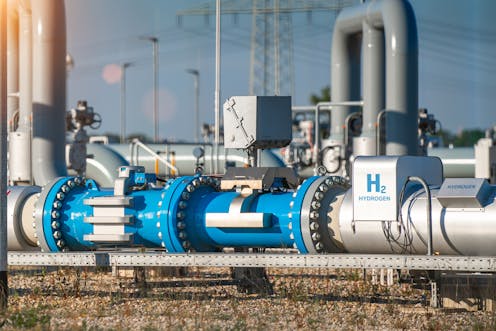
In 1874, Jules Verne wrote in his novel The Mysterious Island:
I believe that one day water will be a fuel, that the hydrogen and oxygen which constitute it, used alone or together, will provide an inexhaustible source of energy and light, with an intensity which coal cannot; since coal reserves will be exhausted, we shall be heated by water. Water will be the coal of the future.
In the 1970s, with the oil crisis, there was already talk of the hydrogen economy, which was predicted to be as profitable as traditional fuels. However, this shift did not happen and we continue to be highly dependent on fossil fuels, well into the 21st century. In the 1970s the market alone was not able to make the change. Now it is clear that a public push is needed to make hydrogen a key player in the energy transition. The European Union thinks so too.
Now it has been announced that the governments of Spain, Portugal and France are to build the so-called BarMar – a gas pipeline running from Barcelona to Marseille.
This is a substitute of the initial project, MidCat, a gas pipeline intended to go through France to provide northern countries with gas. France refused to allow this project to go ahead and, in agreement with Spain and Portugal, traded it for BarMar. This pipeline will initially transport fossil gas from the two Iberian countries into France but then switch to hydrogen when there is sufficient production and demand. It will take four to five years to build.
Hydrogen also consumes energy
For a few years now, the possibilities of hydrogen have been revolutionising the world of energy. In its favour, it is a non-polluting gas, as it only emits water when it is burned. It has been identified as a key player in the fight against climate change because it has the potential to help realise the ambition of cutting CO₂ emissions.
However, it is not a naturally occurring source of energy – unlike oil, gas or coal, it needs to be created before it can be used by consumers. Like electricity, it is an energy carrier – both are ways of transporting, storing and generating energy. Producing hydrogen currently consumes more energy than is returned by burning it.
Hydrogen can be obtained in several ways and falls into different categories:
Grey hydrogen accounts for most of the hydrogen currently produced and is generated by reacting natural gas with water vapour. The downside of grey hydrogen is that producing it emits CO₂ into the atmosphere, making it little use in the quest for clean energy.
Blue hydrogen is obtained like grey hydrogen but the CO₂ produced is then captured.
Green hydrogen or low-emission hydrogen is obtained by electrolysis of water, i.e. by breaking down the water molecule with renewable electricity.
Green and blue are the only colours that meet low emission requirements. There are also other colours in the hydrogen palette, such as pink hydrogen, produced by electrolysis of water from nuclear energy; or gold, produced from organic waste with CO₂ capture.
Means of transportation
Once produced, hydrogen must be transported to the place where it will be consumed. Ideally, its production should be located as close as possible to where it will be used, but this is not always achievable.
For short distances, hydrogen is transported in a similar way to butane cylinders: in pressure vessels carried on trucks.
For longer distances, it is more efficient to have a network of pipelines, the so-called hydrogen pipeline transport. In the short term, the existing natural gas distribution network can be used by injecting some hydrogen into the gas network (a process known as blending). However, in order to transport gas with high hydrogen concentrations, pipelines need to be modified.
In addition, hydrogen’s low density means double the number of gas compressor stations are needed – so the distance between compressor stations would be half that of natural gas.
Big questions for Spain and Portugal
Whether BarMar can ultimately be used to transport hydrogen depends on multiple factors.
In a way, you could say that a hydrogen pipeline is similar to an electricity cable: they are infrastructures created to transport energy generated by another source. This hydrogen pipeline would then work as a vector to export renewable energies created in the peninsula – thus solar and wind energy. Therefore, BarMar really only makes sense if Spain and Portugal are able to produce enough renewable hydrogen to meet domestic demand and have a surplus to export to France.
Increased hydrogen production also means that electricity production will need to be increased. And more high-voltage power lines will be needed to transport this electricity. To generate this electricity, the existing plants are not enough: we need more solar plants, more wind turbines and possibly more nuclear power.
So, even if the project becomes technically viable, its consequences may well still be very unpopular with the public. Installing the new solar parks, windmills or power lines needed may not sit well with people who face having new infrastructure built on their doorsteps. Convincing the public to support the project will take a great deal of careful thought.
The governments of Spain and Portugal are promoting a huge increase in hydrogen production as part of their energy transition work. The BarMar pipe will only make sense if these increases become a reality. Until then, it will simply be a replacement of the MidCat, the pipeline that France never wanted.
The Chair is financed by Fundación Repsol.
This article was originally published on The Conversation. Read the original article.







